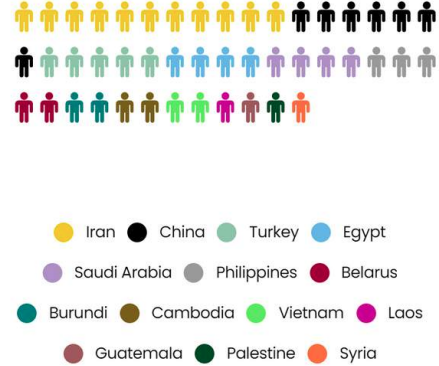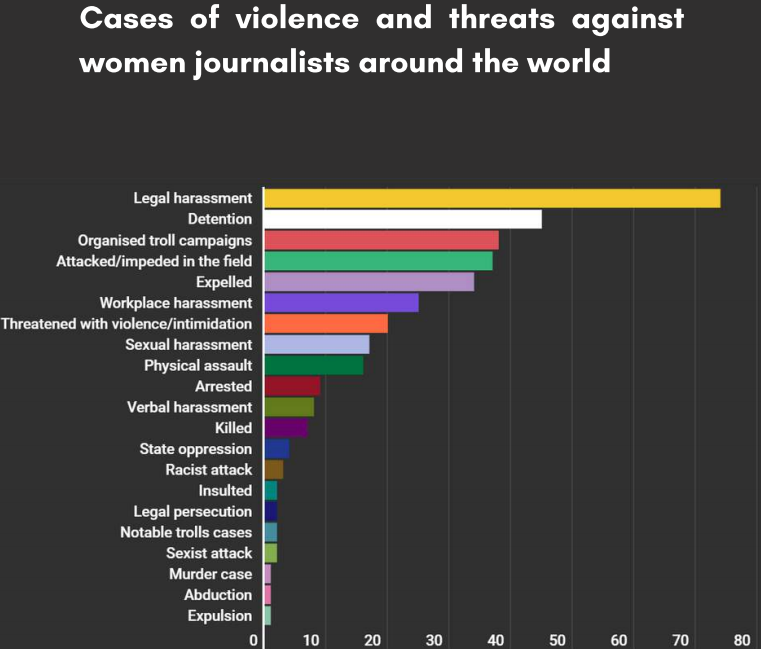By Manizja Aziz
Recently, the Coalition for Women in Journalism (CFWIJ) published its first quarterly report of this year, which presents an image of the threats that women journalists around the world faced between January to April 2021. In order to gather data, CFWIJ kept a close watch on the news, updates and firsthand information regarding the dangers that women journalists have faced this year so far.
Read more
Find the full First Quarterly Report January to April 2021 by CFWIJ here.
Throughout the first quarter of 2021, CWFIJ documented 348 cases of violence and threats against women journalists around the world. Compared to the first quarter of last year, the total number of cases against women in the media increased by 284.8 percent. The countries where the most instances of violence and threats have been recorded, are Afghanistan, Turkey, Myanmar, Pakistan, and Belarus. Whereas five women journalists were killed in the entire year of 2020, this year already seven women journalists were killed in Afghanistan, Cameroon, Algeria and the United States.
As of 3 May 2021, at least 48 women journalists are still behind bars. This is very problematic, as in many recorded incidents women journalists also suffer torture during their imprisonment. Many journalists have been detained following demonstrations or protests that they were covering. The visual below shows the countries where these women have been imprisoned.

Legal harassment is the biggest threat for women journalists recorded by CWFIJ’s report. So far this year, CFWIJ has documented at least 72 cases of legal harassment. Added up with the number of detentions, it is clear how the (abuse of the) legal system now poses a huge threat to (women) journalists and how laws can be weaponised in order to target and silence journalists.
Another large problem is harassment, which can take place both in the workplace and online. The harassment that women face is grounded in misogyny and often has a sexual character, as many women journalists receive rape threats and are victims of sexual photoshopped images or falsified videos, used to discredit and demean them. Again, the so-called ‘double attack’ of women journalists becomes apparent: they are attacked both for being women and for being journalists. That is why it is so important to focus on the gendered aspects of the threats that women journalists face. The assaults these women journalists endure, whether online or offline, threaten their right to freedom of expression and inhibit the plurality of voices in the media.

